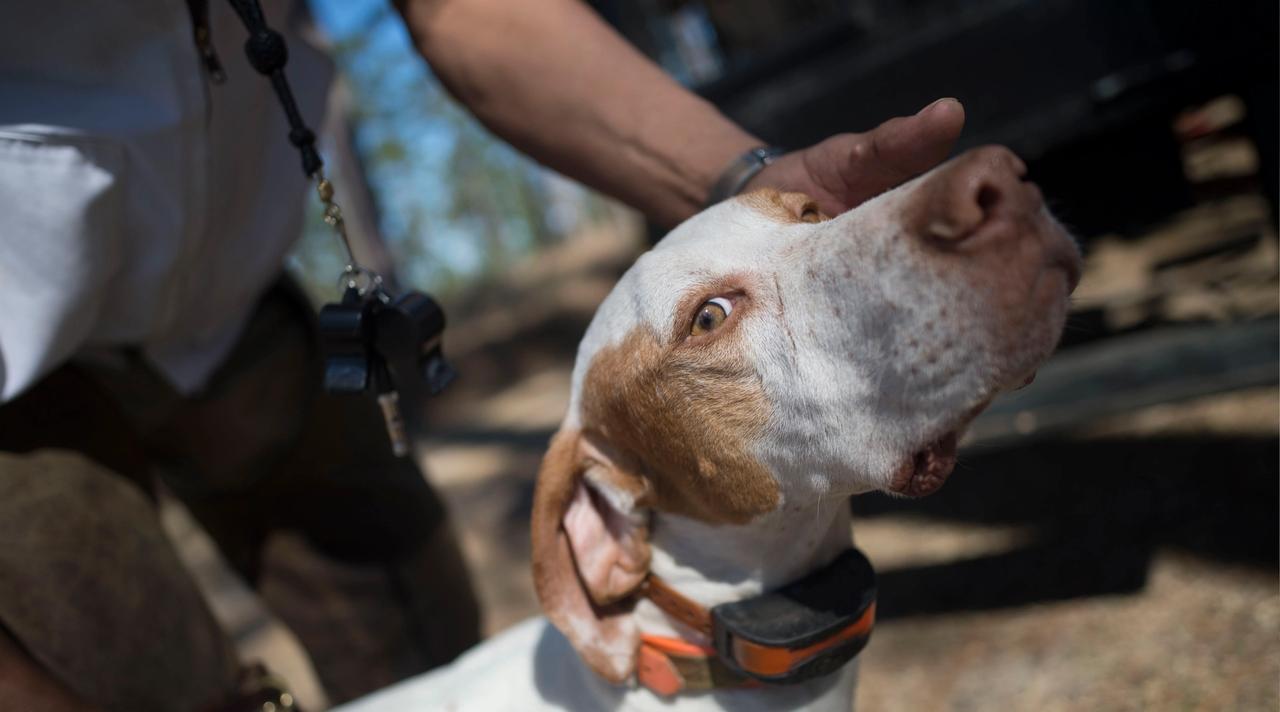
Dealing with Hunting Dog Injuries
Posted by The SportDOG StaffCuts are common in hunting dogs. Briars, barbed-wire, broken glass, or even sharp broken saplings can slice a dog’s skin as it hunts. Appropriate field care of wounds can decrease healing time and make the veterinarian’s job much easier. Remember the watchwords: flush, fill and wrap.
Flushing
Fresh cuts may look quite clean to the observer but most often, tiny fragments of debris and certainly microscopic bacteria are present in even the freshest lacerations. A forceful stream of an appropriate liquid can dislodge the tiny foreign objects in the wound and physically remove many of the early germs that are present.
A plastic squeeze bottle or, better, a new spray bottle should be in every hunter’s truck for flushing wounds. Your veterinarian can recommend the correct fluid to use, but distilled water or sterile saline solution will work. Be fairly aggressive with the flushing. The stream is not going to do any harm so set the spray bottle on the “stream” function and spray large quantities into the wound bed. Blot the area dry with a clean surgical sponge after the flushing.
Filling
After the initial cleaning with the flush, wounds can be protected by filling them with a harmless gel. K-Y Jelly®, EMT Gel®, or Collasate™ are ideal choices. These gels provide a physical barrier to hair and other contaminants en route to the veterinary clinic and the EMT® and Collasate™ products may do more toward healing.
Your veterinarian may recommend other topical medications. Topical antibiotics, like those found in Neosporin® ointment, are popular but I have always questioned the value of antibiotics in a topical product. Regardless, they do no harm.
The key is the physical presence of the gel or ointment helping prevent further contamination. In a pinch, petroleum jelly would work but is difficult to remove as the veterinarian prepares to suture or treat the wound later.
Wrapping
Many wounds cannot be bandaged or do not need bandaging. Cuts on the chest wall, back, muzzle, etc. are not easily covered. Lacerations on the legs, tail and ears are amendable to bandaging. The key is to avoid placing dry cotton bandage material directly on the wound. Dry material adheres to the tiny cells that begin healing within minutes of the occurrence of the cut and pull them away from the wound edges when the bandage is removed. In addition, the tiny micro-clots that form quickly after a cut will also be disrupted upon removal of the bandaging and could lead to further bleeding.
Normal clotting time for healthy dogs is between two and three minutes. Those are laboratory values; dogs that have been running hard may take up to five minutes for bleeding to stop. That is a long time to sit and watch your dog drip blood in a field. Direct pressure from your hand or a snug bandage is the best way to stop bleeding. A small kit containing some bandages impregnated with petroleum jelly (Adaptic® non-adherent bandages) and a larger piece of absorbent cotton can work well to stop bleeding.
Place the Adaptic® sponge over the cotton and press it to the wound for five to eight minutes. Then, gently remove to the material to check the bleeding. Serious arterial bleeding is a dangerous situation with an obvious spurting blood stream. These wounds should be immediately covered with the blood-stopping pressure bandage or hand-held in place while the dog is transported to professional care.
For non-bleeding wounds, a simple bandage should cover the laceration after it has been filled with the protective gel. The objective is simply to reduce further contamination. Snug is fine, but very tight bandages can cause serious problems.
Several tapes are available and good. Vetwrap® is popular and useful. It sticks only to itself, which makes for easy removal at the veterinary clinic. Good old standard adhesive tape in a 2-inch width is also useful. In a pinch, hardware duct tape will suffice for first aid use but it leaves a substantial residue of glue after a usually difficult removal process.
Again, the risk of getting any bandage too tight should be considered. As you place the tape over the wound all pulling should be done against your other hand. Do not pull the tape directly around the wounded area. Place two fingers against the tape near the roll and put the pressure on the fingers not the dog. Then, place the tape gently over the wound.
Cuts on the tip of the ear flap (called the “pinna”) are especially troublesome. As the normal clotting process proceeds, the dog tends to shake its head which breaks loose the tiny clots that have formed and the process starts all over again.
Bandaging the ear is ideal but can be difficult as the dog tends to sling off bandages quickly. Taping the cut ear tip to the top of the head will work and help the clotting process.
But, be extremely careful if you elect to wrap the tape all the way around the dog’s head and neck. The risk of closing off the dog’s windpipe is substantial. You should be able to get two fingers easily under the bandage on the bottom of the neck if this type of wrapping is required.
Do not waste valuable time in the field redoing bandaging again and again for ear tip cuts or other cuts. Rapid transport to the veterinary clinic is the ideal.
As always, a conversation with your veterinarian is the optimal source for information concerning field care of cuts.
Always check your local and state regulations related to dog training and the use of game birds on private and public property.
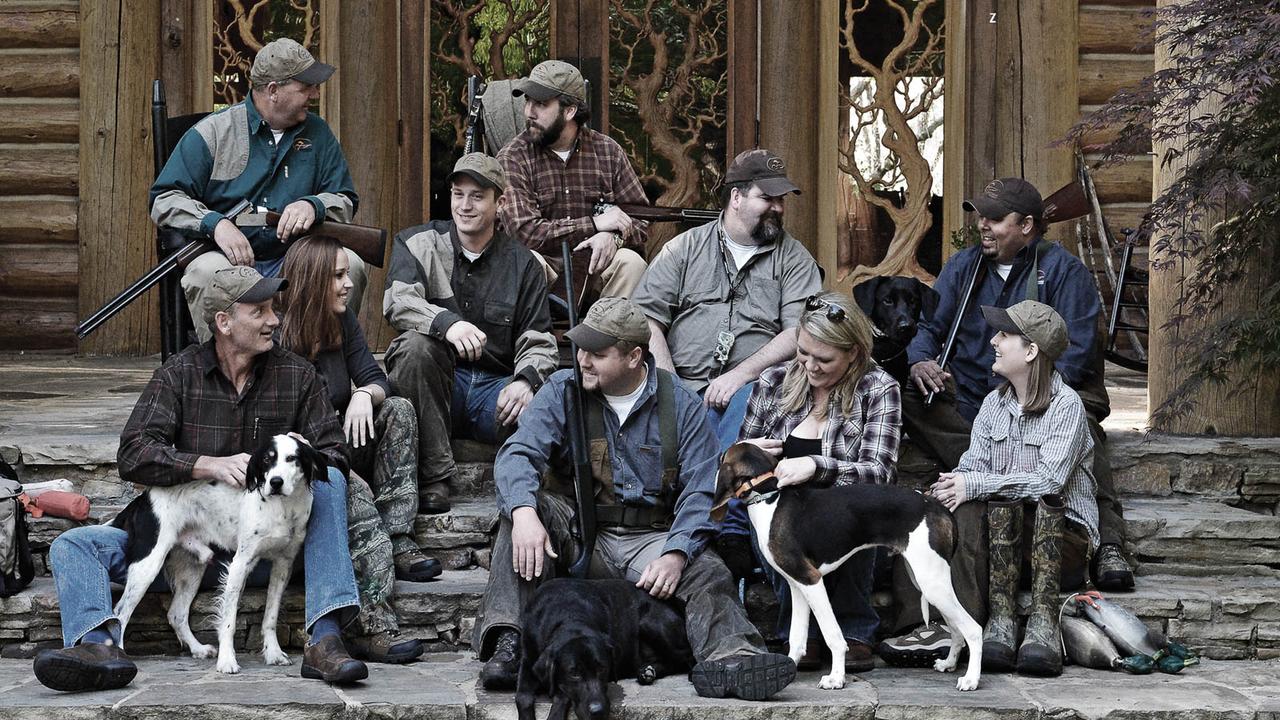
The SportDOG Staff
Related Articles
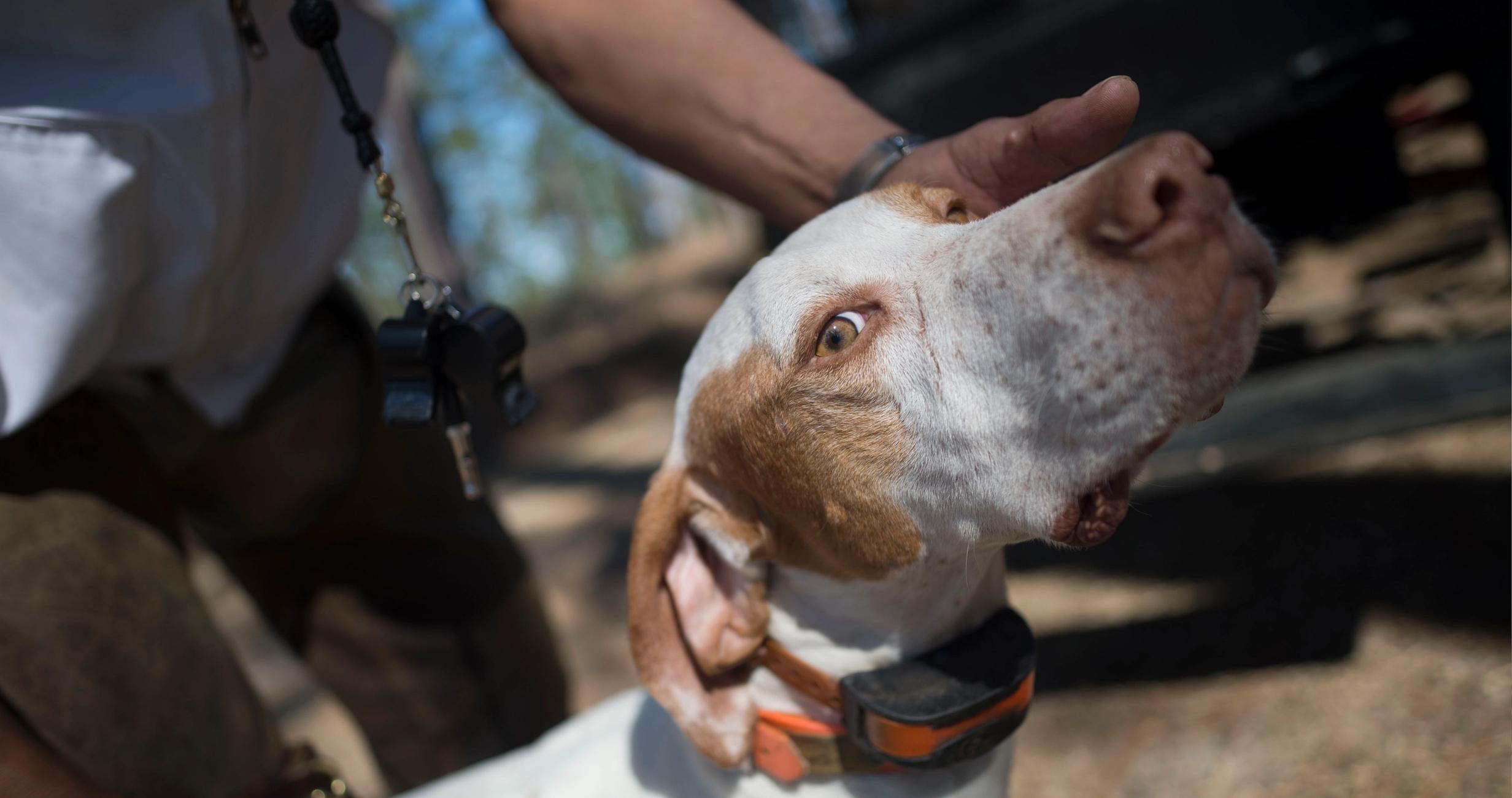
First Aid for Your Hunting Dog - Video
by The SportDOG Staff
In this SportDOG Brand Training Tip (originally aired on Pheasants Forever Television) Dr. Joe Spoo,DVM explains the correct way to provide first aid care for your hunting dog while in the field. Emergency care for your gun dog in the field can prevent long term dog problems from developing.
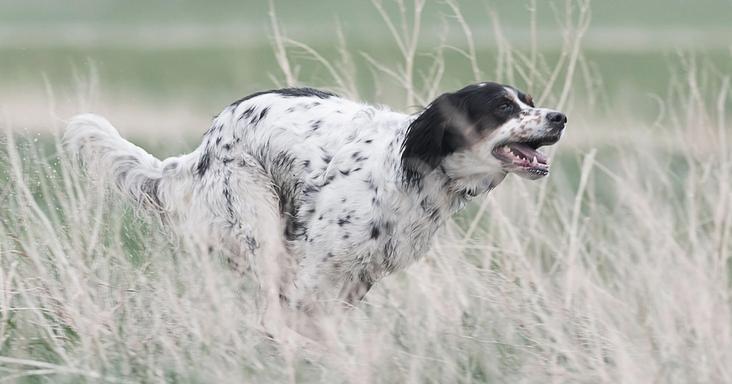
Building a First Aid Kit
by The SportDOG Staff
My background is a bit different than many of the dog handlers on the SportDOG® ProStaff. I’m a tactical paramedic. I work with law enforcement and service dogs. In fact, I’ve never hunted with dogs. However, I’ve trained explosive-detection canines, and I specialize in cadaver dogs. Today, I teach canine...
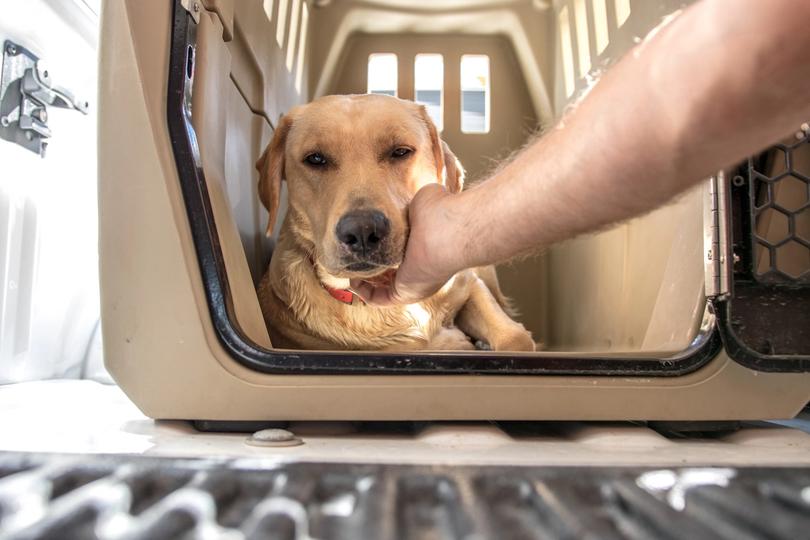
Understanding Canine Influenza
by The SportDOG Staff
If you have been watching the news lately or reading metropolitan newspapers, you may have noticed articles about a “new” flu outbreak in dogs. In some sections of the country, veterinarians are reporting a near-panic situation around this canine flu news. Here are the facts. Canine Influenza Virus is a relatively...

Understanding Hunting Dog Ear Infections
by The SportDOG Staff
Most hunting dog breeds have flop ears. This drooping ear flap contributes to a high incidence of ear infections because it decreases air circulation and traps bacteria, fungi and debris in the ear. The flop ear also makes it slightly more difficult for the owner to see ear problems promptly. Contributing...
